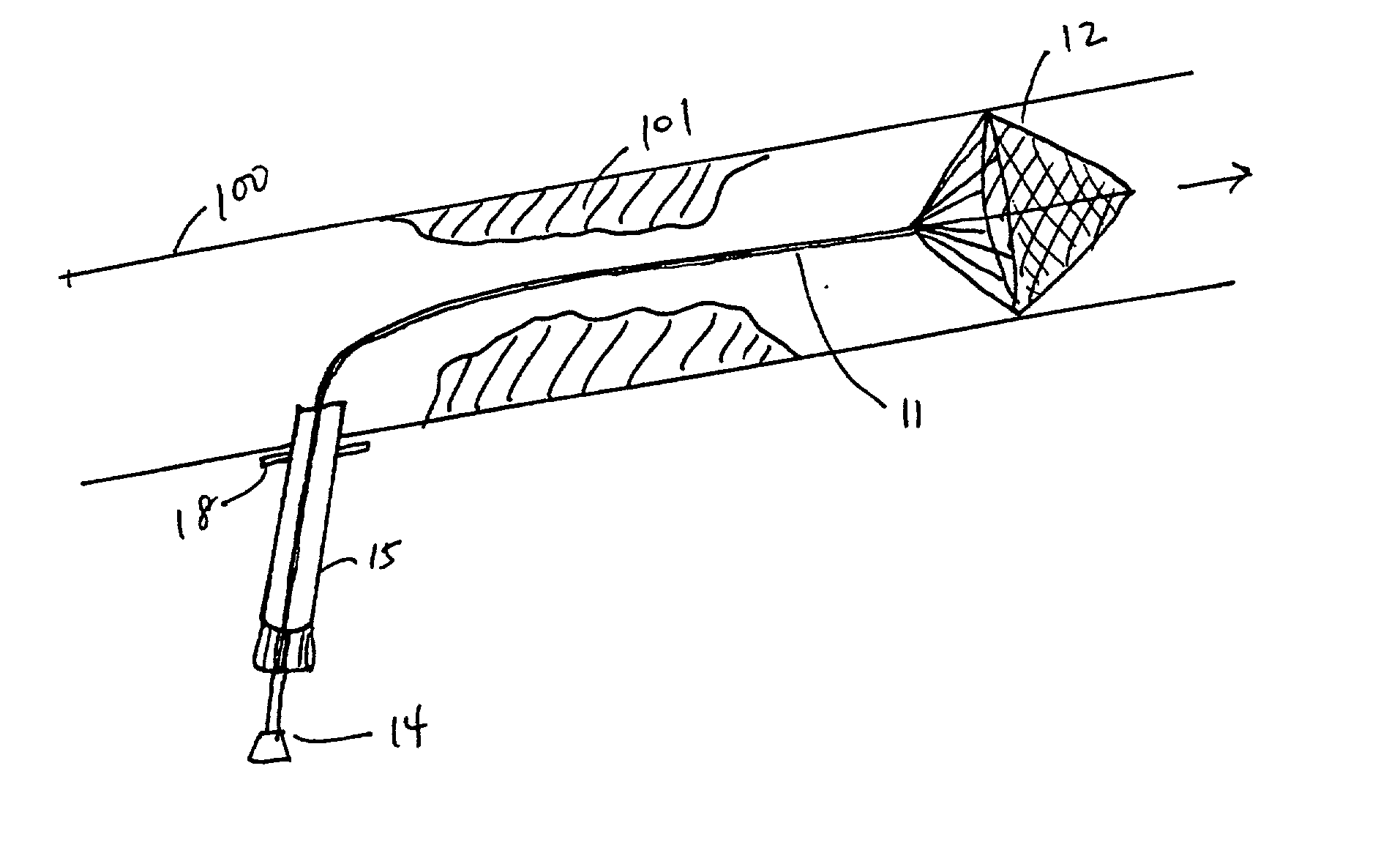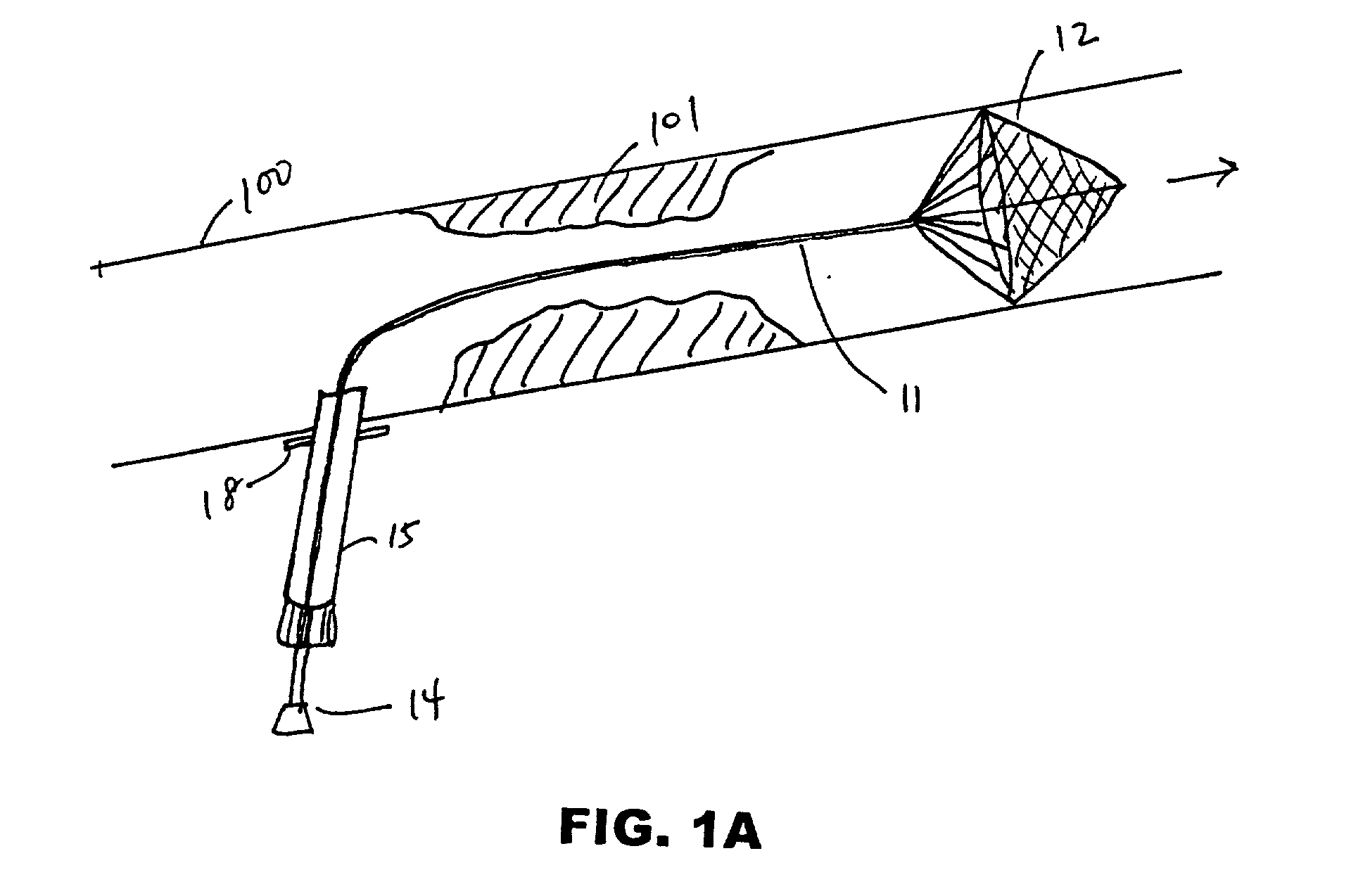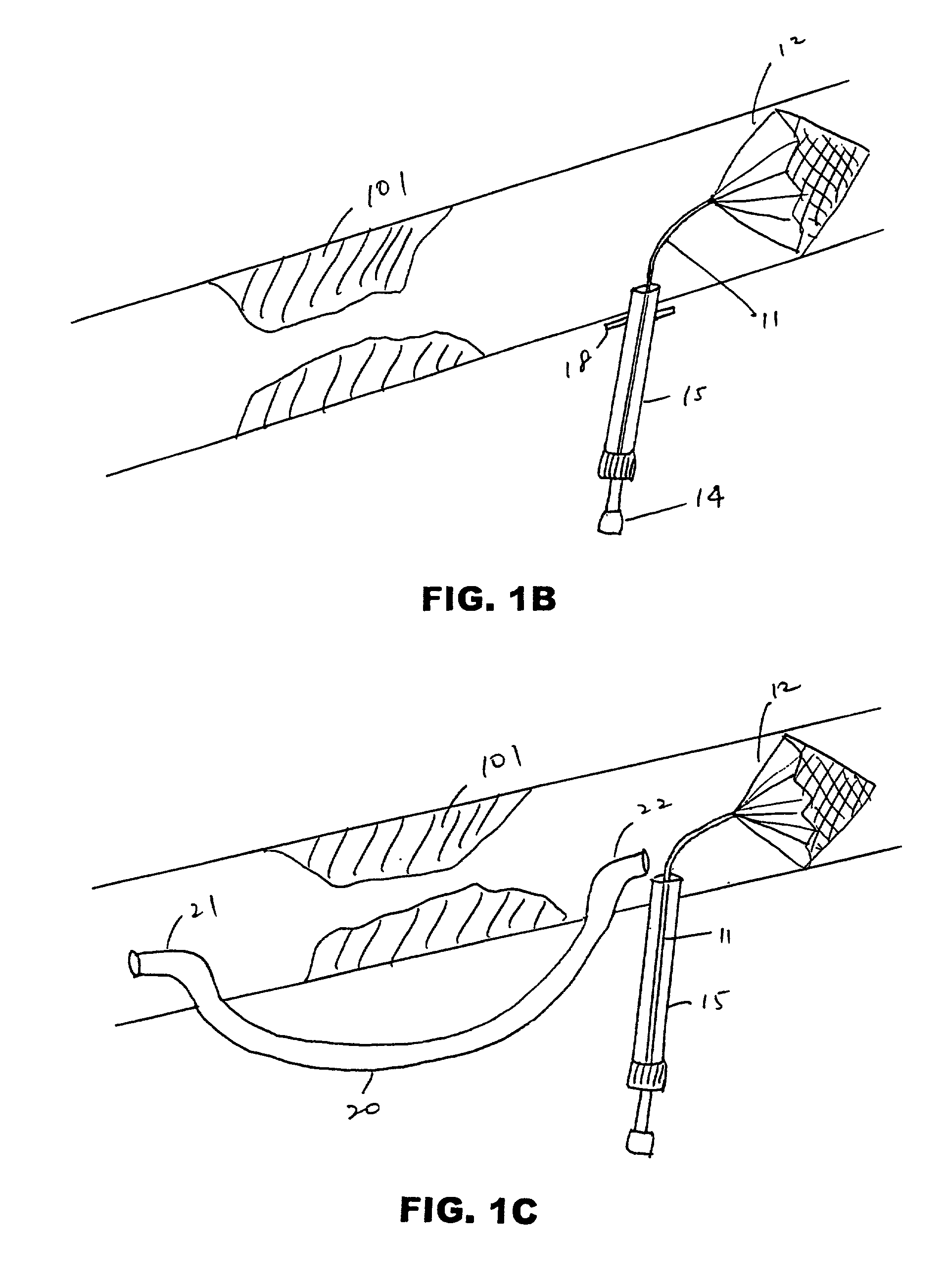Cerebral protection during carotid endarterectomy and methods of use
- Summary
- Abstract
- Description
- Claims
- Application Information
AI Technical Summary
Benefits of technology
Problems solved by technology
Method used
Image
Examples
Embodiment Construction
[0058] The devices and methods disclosed herein function to prevent embolic material from migrating downstream (into the brain, the kidneys, the lower extremities, etc.) during vascular surgery. The devices and methods herein are useful during any procedure where vessels are incised for the purpose of removing occlusions or performing other types of repair that may require the use of shunting to maintain distal blood flow.
[0059] FIG. 1A depicts an embodiment of a filter device deployed in carotid artery 100 proximal to atheromatous lesion 101. The device comprises filter assembly 12 mounted on elongate member 11 (guidewire, sheath, etc.). Elongate member 11 is insertable in the lumen of introducer 15 and is connected to filter delivery cartridge 14 at its proximal end. Suture flange 18 is mounted on a distal region of introducer 18.
[0060] The device of FIG. 1A is useful in performing endarterectomy in patients with adequate cerebral perfusion and not requiring a shunt. Introducer 15...
PUM
 Login to View More
Login to View More Abstract
Description
Claims
Application Information
 Login to View More
Login to View More - R&D
- Intellectual Property
- Life Sciences
- Materials
- Tech Scout
- Unparalleled Data Quality
- Higher Quality Content
- 60% Fewer Hallucinations
Browse by: Latest US Patents, China's latest patents, Technical Efficacy Thesaurus, Application Domain, Technology Topic, Popular Technical Reports.
© 2025 PatSnap. All rights reserved.Legal|Privacy policy|Modern Slavery Act Transparency Statement|Sitemap|About US| Contact US: help@patsnap.com



